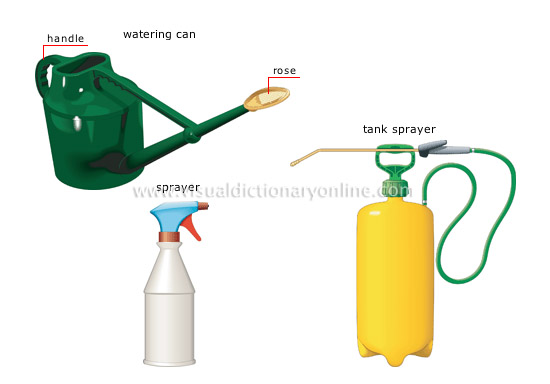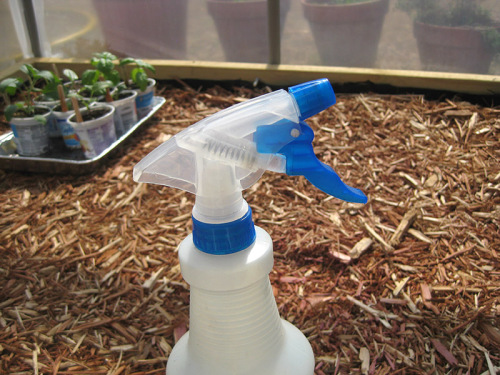
Baby plants that emerge from seeds as a result of seed germination are known as seedlings. Basically, it is made up of three sections.
- Hypocotyl
- Radicle
- Cotyledons
Plant seedlings are delicate young plants. To grow smoothly, they require the right pH, minerals, light, and temperature in the soil and water.
Rainwater is the ideal water source for seedlings. Because it has trace levels of minerals and has a pH between 6.5 and 7.0, rainwater is nutrient-rich. In comparison to other forms of water, the water at this pH encourages the soil’s minerals to free more readily.
In the early mornings or late evenings, water can be applied by sprinkling or bottom watering.
The most crucial biological element influencing a seedling’s healthy growth and development is water. Your seedling may suffer if you make a small watering compromise, and it could even perish before maturing.
In this article, I’ll go over the several kinds of water that may be used for seedlings, which one yields the greatest results, and what to watch out for while watering seedlings.
Table of Contents
Types of Water To Use For Seedlings:

To feed seedlings, various types of water are available. While some types of water can hurt your seedlings, others are actually quite good to them.
To help you fully comprehend the various sorts of water, we have covered a few of them below.
Tap Water:
- People utilize city or tap water on a daily basis. It is utilized by people for cooking, cleaning, and drinking.
- The majority of people water their plants with tap water because it has specific salts that help create soil and make up for mineral deficiencies.
- Fluoride, chlorine, sodium, and a few other mineral additions are abundant in tap water.
- While some plants can thrive on tap water, few can reach their full potential.
Rainwater:
- Rainwater is the liquid that results from rain.
- Because rainfall has such positive effects on plants and seedlings, many gardeners use it for gardening.
- For the majority of gardeners, it is the ideal option because it helps remove extra salt from lawns and reduces water usage.
- Rainwater is often collected by gardeners and used to water plants, seedlings, or even both.
- Rainwater’s pH range of 6.5 to 7.0 is ideal for releasing minerals from the soil so that plants can use them.
Distilled Water:
- Due to its lack of contaminants and dangerous microbes, distilled water is also referred to as “dead water.”
- Boiling water produces steam, which is then cooled to transform it into liquid. The resultant water is referred to as distilled water and is thought to be the cleanest type of water.
- All contaminants, including bacteria, pesticides, and other pollutants, are absent from distilled water.
- Additionally, it eliminates 99.9% of the minerals that are dissolved in water.
- It is frequently used in gardening to lower soil toxicity levels.
- It is also regarded as one of the greatest waters for seedlings’ larger and healthier growth.
Boiled Water:
- Boiling water is the term for the water that is produced through heating.
- Because the contaminants evaporate during boiling, boiled water is devoid of impurities.
- Because it eliminates many dangerous weeds around plants, gardeners like to use boiled water on plants.
Noted: Remember to let the hot water to cool somewhat before using it.
Well Water
An inexpensive approach to give nutrient-rich water with minerals like calcium and magnesium in the pH range between 6.5 and 8.0 is to use well water on seedlings.
To make sure it doesn’t have any biological or chemical impurities that could stunt plant growth, well water should first be examined. This is due to the possibility of heavy metals and other undesirable pollutants.
As long as it has been treated and cleared of dangerous pollutants, well water is thought to be advantageous for plants.
I use a watering can that I purchased on Amazon that is affordable, sturdy, and facilitates watering without creating a mess. Clicking here will take you there.
Can I Use Tap Water For Seedlings?

As was previously indicated, seedlings are sensitive to the water we provide. Therefore, it is preferable to pay them more attention than usual. Minerals like fluoride, chlorine, potassium, magnesium, calcium, etc. are abundant in tap water and city water. These minerals, if present in large amounts, can seriously injure both your established plants and seedlings.
Potassium, calcium, and magnesium are essential for a seedling’s healthy growth but only in moderation.
For seedlings, a small amount of tap water is not harmful and does not harm them. However, bear in mind that as the seedling develops into a young plant, you must stop providing the plant with tap water.
Should I Water Seedlings With Distilled Water?
The water quality organization states that seedlings can be watered with distilled water. For seedlings that are sensitive to various chemicals and minerals, distillate water might be utilized.
There are also some seedlings that are sensitive to chemicals and minerals like fluoride and chlorine. Therefore, it is advisable to use distilled water for these seedlings.
Such plants that dislike minerals are known as air plants since the purest form of water, free from harmful pollutants and toxins, contains them.
Research shows that seedlings given distilled water treatment subsequently grow well and produce more leaves that are healthy. Therefore, it is simple to draw the conclusion that distilled water is an excellent option for sensitive seedlings.
Can You Use Rainwater For Seedlings?
Seedlings can be watered with rainwater. Because of its natural softness, the water aids in washing away the extra minerals found in the soil.
Additionally, it aids in clearing out the stomata on the leaves. It controls how much carbon dioxide and nutrients are taken in for the photosynthesis process.
Additionally, it has more oxygen than regular water. As a result, plants require oxygen at night to carry out cellular respiration.
Have you ever noticed how when it rains, a lot of the seedlings become apparent and develop quickly? The minerals that the seedlings require from the growing substrate are supplied by rain. The seedlings’ growth is substantially accelerated by it.
Additionally, you can naturally accelerate your seedling’s growth by harnessing the benefits of the soil by watering it with precipitation.
Can You Add Nutrients/Fertilizer When Watering Seedlings?
Yes, you can sprinkle nutrients or fertilizers on seedlings as they are being watered, but you must do so at the proper moment. So, do you have any questions on when it is best to fertilize or feed the seedlings?
When you see that your seedling has its first three to four pairs of genuine leaves, you can start feeding it the proper nutrients or fertilizer once or no more than twice a week, depending on what it needs.
Fertilizers with trace amounts of phosphorus, magnesium, calcium, nitrogen, sulfur, and potassium can be used to nourish seedlings. For seedlings to grow more effectively, they require each of these nutrients.
How Much Water Do Seedlings Need?
A seedling frequently needs water. Watering the seedling two or three times daily is not advised.
A study suggests that the seedling shouldn’t remain damp. It should, however, be wet. One daily watering is adequate for the seedlings.
You can apply water again using a water spray to keep the seedling moist if the temperature is too high and it does not stay that way after one round.
Make sure the soil is only slightly moist, not drenched. You can check the moisture in the soil by dipping your fingertips in it for this purpose.
Bottom Watering Seedlings
By enabling the complete root system to utilize the administered water that has been evenly dispersed inside the soil, bottom watering seedlings promotes robust and healthy plant growth.
The prevention of overwatering and the accompanying pests and diseases is another advantage of bottom watering seedlings.
Watering seedlings from the bottom can be challenging, but it is well worth the trouble. Water is necessary for seedlings to flourish, yet improper watering might eventually cause them to perish.
The practice of watering plants and seedlings from the base of the plant is known as bottom watering. Because water can be supplied directly to plants with minimum waste, bottom watering is a simple and economical method of growing plants.
To learn how to bottom water seedlings, read the complete article.
Summary:
The best water for seedlings
- For the growth and wellbeing of seedlings, many forms of water (distilled, rainfall, etc.) can be employed.
- It’s not always preferable to use tap water for the growth of seedlings.
- In comparison to tap water, distilled or bottled water is said to be better for seedlings.
- One of the best waters for growing seedlings is thought to be rainwater.
- Do not water your seedlings too frequently because this could hurt them.
- When a seedling has at least three or four sets of genuine leaves, you can add nutrients or fertilizer to the water.
- The most important factor in caring for seedlings is probably the type, quantity, and frequency of watering.
FAQ
Can you water seedlings with spray bottle?
Techniques for Watering Early Germination A powerful water stream can easily topple young plants since they are so weak and vulnerable. This is why I advise using a spray bottle or a hand pump sprayer. Once your seeds have started to sprout, take off any clear plastic trays you used to cover your seed trays or containers.
How do you water the bottom of seedlings?
Should I water seedlings from the top or bottom?
To allow the seedlings to absorb water through the container drainage holes, add water from the bottom. With this method, there is less possibility of overwatering. Use your finger to gently touch the top of the soil to check that moisture has reached the soil’s surface after steadily adding water for 10 to 30 minutes.
How much water in the bottom of a seed tray?
Add water to a tray underneath your seed tray before watering from below. Allow the water to reach the bottom of the seed tray by about 14 inch (6.35 ml). Watch the seed container to determine when the water has reached the soil’s surface.
